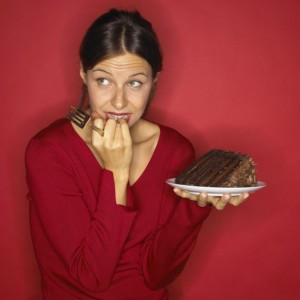 Last post, I emphasized an assumption of incompleteness as the foundation of craving. This feeling was referred to by readers as a hole, or pothole, or just plain lacking something. There is a lot to that, for those of us who put things (like booze or drugs) into us, in order to fill us up. But recent comments from readers struggling with anorexia or bulimia should make us think about craving more broadly. For some people there’s a compelling need to get rid of something.
Last post, I emphasized an assumption of incompleteness as the foundation of craving. This feeling was referred to by readers as a hole, or pothole, or just plain lacking something. There is a lot to that, for those of us who put things (like booze or drugs) into us, in order to fill us up. But recent comments from readers struggling with anorexia or bulimia should make us think about craving more broadly. For some people there’s a compelling need to get rid of something.
What’s the common denominator?
As mentioned time and time again: relief from suffering, and I still think this translates to feeling complete. To be protected against suffering you have to be complete. For some that means filling holes, for others it means getting rid of excess. Either way, we want to make ourselves ideal, coherent, whole, and thus safe from suffering.
Let’s start with those of us who need to put something into ourselves.
This is not the time to review Freud in detail, but a hundred years of psychodynamic (e.g., post-Freudian) theory point to the infant’s need for milk or food, and the relief it provides, as the primal experience of taking something inside ourselves – something we need in order to be okay. One psychodynamic theorist, Melanie Klein, thought that young children experience a profound longing, which she called “envy,” for the mother’s breast or the mother herself. The infant seemed to know, beyond any doubt, that he or she needed something outside the self, in order to be complete. Maybe the first few times you got high, or drunk, or laid, you were reminded of how that works.
But what about those of us who need to get rid of something? There may be a feeling that we are too much, too dirty, too big, too fat, too needy, too greedy. I think even those of us who tend to shoot for more rather than less can identify that feeling. We want to trim ourselves so that we can be pure. Clean and nice. Maybe the common denominator is something really simple, like feeling “good,” which translates to lovable in cuddly mammals like ourselves.
Psychologists try to measure craving, or desire, using verbal information. For example, Hofmann, Baumeister, and colleagues (2011) got 200 people to participate in an experiment in which they were beeped at random times throughout the day and asked to record whether they were presently experiencing a desire…among other things. To make a long story short, participants reported at least one current desire on 50% of the occasions they were beeped. “On average, desires were actively resisted on 42% of occasions and enacted on 48% of occasions.” Well, I’m not sure that puts us much further ahead. Desire is a fact of life, and a lot of desires have to be inhibited. That psychological datum fails the Grandmother Test: my grandmother could have told me that.
Which is why I turn to neuroscience: the biological basis of mind. I recently heard a very succinct account of what dopamine does in the striatum. It decreases “noise”. There are always a number of competing motor plans — plans of action — vying for enactment. That’s the normal noise in the system. What dopamine does is to inhibit the weaker plans and disinhibit (augment) the strongest of the competing plans. It’s a biological mechanism, sort of like focusing your eyes. So what dopamine does in the striatum is to narrow the field of potential actions, from many down to one. And that’s the basis of craving: a narrowing of focus and motivation to one thing and one thing only.
How could it be so simple?
A “cue” in psychologese means a reminder, an association. According to the research, drug and alcohol cues (like clinking ice cubes or round yellow pills) immediately increase dopamine flow for addicts, drawing our attention to those cues and away from other things. Thus the “plan” to acquire the thing being cued (the drug or drink) is strengthened. Then internal cues — remembering, wishing, imagining — join whatever cue came first, and each of those mental cues also increases dopamine flow to the striatum. From a trickle to a torrent. So, before long, there really is only one plan of action, one intention, one goal, that feels worthwhile. And whether or not it’s forbidden, it overtakes the prefrontal cortex with its urgency: the need to get the one thing that will make us feel complete. Or get rid of the one thing that makes us feel incomplete.
That’s how brain science makes addiction make sense. Craving…addiction…an aberration, according to the ideals of our society. But a very natural process for a part of our brain whose job it is to motivate us to make things better.
Leave a Reply to Peter Cancel reply